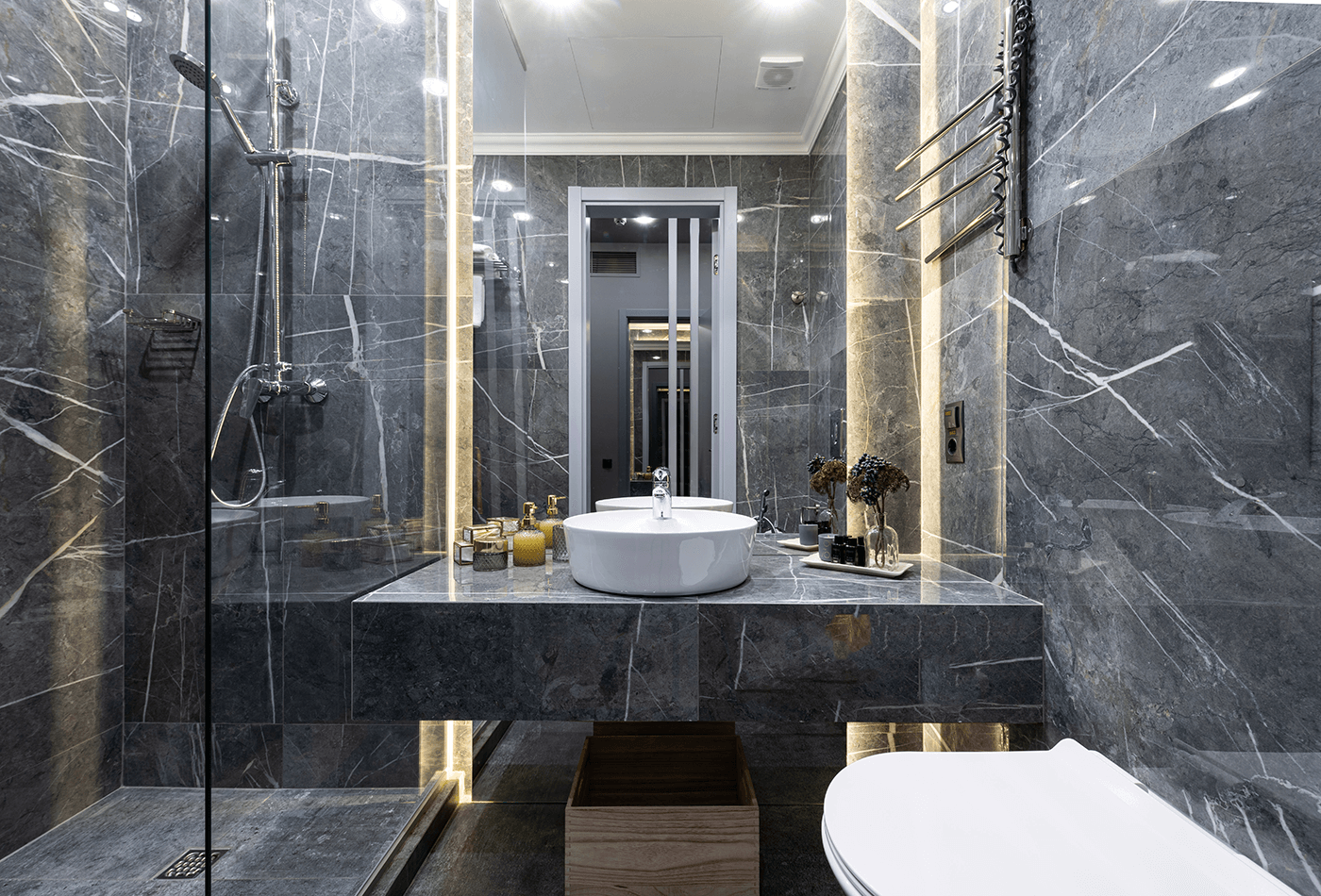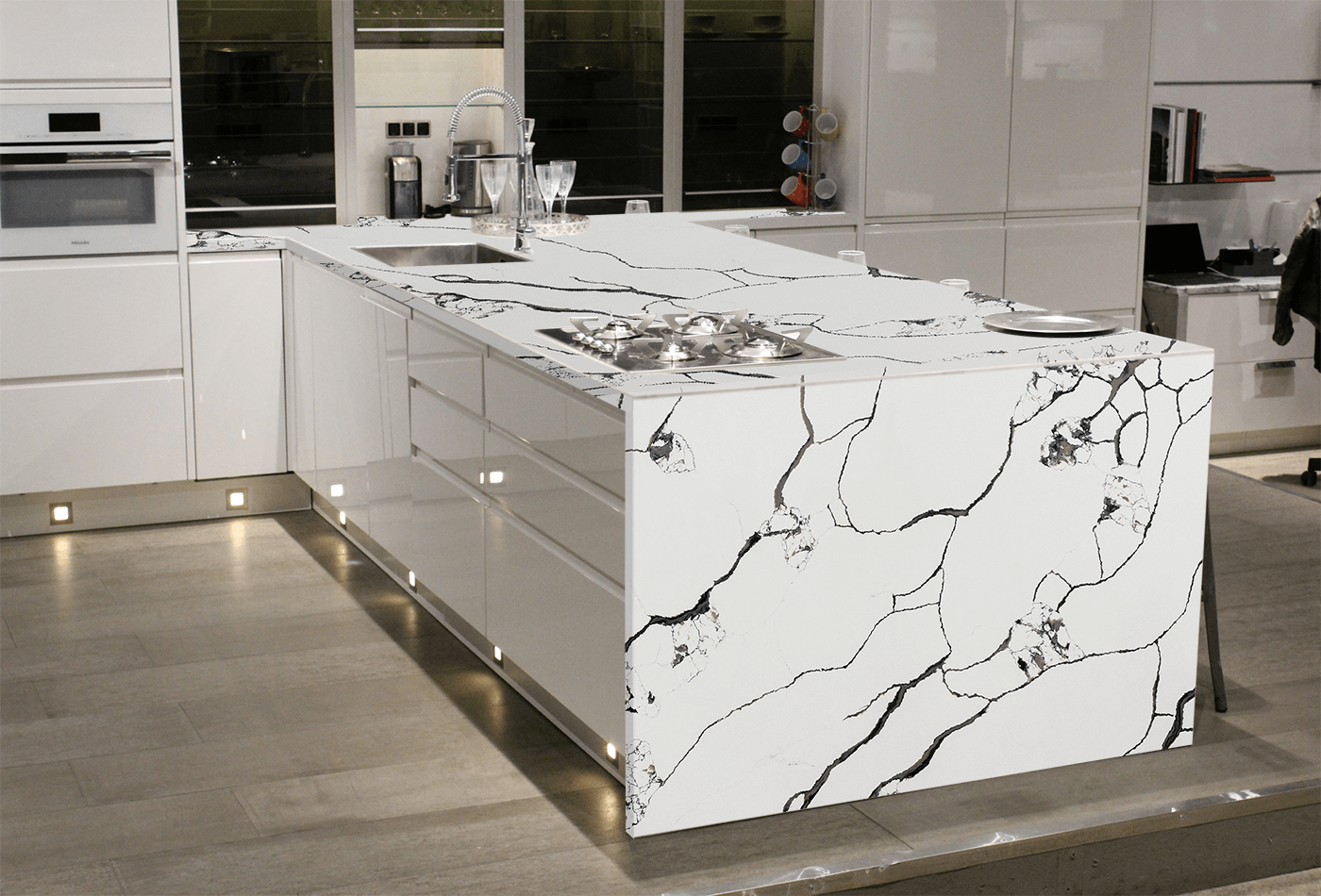Table Of Contents
Lime Stone is a captivating fortune procured from natural ground sources that have been cherished for centuries for its diverse applications, remarkable properties, and timeless beauty. This article probes into the world of Lime Stone, exploring its various types, formation process, extensive uses, unique properties, numerous benefits, and the rationale behind its growing popularity as a preferred choice for countertops.
Is Lime Stone Suitable For Home Architecture?

Lime Stone is a sedimentary rock, generally light in colour. It primarily comprises minerals like aragonite and calcite, which are varied crystal forms of calcium carbonate. Their origin can be traced back to biological and chemical processes. At present, Lime Stone has marked its territory in Lime Stone.
RELVINHA LIMESTONE
£255.95 Relvinha Limestone is fine grain, light beige limestone of compact appearance with an alignment of very small size brownish grains and fossils, known as veinage. Limestone Countertop are extremely durable but when exposed to extreme natural effects of wind, rain,… read more |
PORTO LIMESTONE
£253.25 Porto Limestone is a cream colour honed limestone. The matt finish gives them a unique look. It's easy to clean and durable properties makes them more desirable. There's no doubt that natural stone flooring is the way to go in… read more |
SAN SEBASTIAN LIMESTONE
£296.45 San Sebastian Limestone is a warm beige limestone with no movement or patterning. Surface treatments can accentuate or muffle the colour while also providing variable degrees of non slip effectiveness or textural appeal.Most common types of staining agents in a… read more |
Types Of Lime Stones You Could Find In Or Off Market

Lime Stone comes in several varieties, each with distinct characteristics resulting from different mineral compositions and geological processes. Some common types include:
Chalk
Soft and porous chalk primarily comprises microscopically small shells and plant remains.
Travertine
A type of Lime Stone formed by mineral-rich water deposits. It often features unique patterns and holes caused by escaping carbon dioxide, giving Travertine a rippled appearance and sustaining power to stand in hard conditions.
Fossiliferous Lime Stone
This variety showcases an abundance of fossils, revealing its origin from ancient marine environments.
Oolitic Lime Stone
Comprising circular grains named ooids, this type has a visually distinctive appearance.
Coquina:
Formed from broken shell fragments, coquina is both durable and visually striking.
Formation Of Lime Stone

Lime Stone is primarily formed by accumulating calcium carbonate-rich organic matter in marine environments. Over millions of years, this matter compacts and solidifies to create the stone we know as Lime Stone. During this process, fossils and mineral impurities contribute to its aesthetic diversity.
JURA BLUE / GREY LIMESTONE
£266.75 Jura Blue / Grey Limestone is a beautiful natural stone highly sought after for its unique pattern and colour. Composition: It is a sedimentary rock composed of calcite and dolomite, making it very durable and suitable for various applications. Pattern:… read more |
Historical Significance Of Lime Stones
Ancient sculptors admired Lime Stone for its work simplicity and excellent carving properties. There is evidence of redefined sculptures made of Lime Stone by The Maya people from the pre-classic period, which dates back to almost 200-100 BCE, carved things with social and political messages the king wanted to convey to his people. The Maya would also decorate the ceilings and cover walls of sacred buildings with Lime Stones.
It regained popularity in the late 19th and early 20th centuries when it was used for building banks and train stations, exteriors of skyscrapers etc. Many medieval castles and churches in Europe also show traces of it.
Properties Of Limestone Worktop

Range Of Colours To Pick
Frequently observed hues can be graded into three categories: white, beige, and cream; Lighter shades make the kitchen look airy and spacious.
Darker shades like Grey and blue Lime Stone flooring are suited for busy areas like a kitchen.
Brown and red, when embedded with impurities, it results in these shades. With an increase in the level of impurities, they even appear rose-coloured. These earthy tones make kitchen and bathroom worktops look very elegant.
Crumbling
They show some amount of brittleness. Causes could be a breakdown of the binder, the effect of external factors, or the innate fragility of the stone itself.
Durability
Lime Stones are extremely durable, but they seem to deteriorate when exposed to extreme natural effects of wind, rain, and thermal instability. It happens because this carbonate stone shows high reactivity upon coming in contact with mild acidic rainwater. However, with a Kitchen Worktop, it will be more manageable since they are indoor surfaces.
Staining
By nature, this stone has a very porous surface. Common staining agents are rustic stains of metals, Bronze and copper stains from unattended copper salts, dyes and inks, organic stains from tea, coffee, acidic fluids, etc. Proper sealing before installing kitchen Worktops and at regular intervals after doing so is thus a mandate.
Chipping
Chopping boards must be used permanently to avoid cuts, chips, knocks and scratches.
Heat Tolerance
Lime Stone worktops show great heat tolerance, which means your countertop will not be damaged upon placing a hot pan or dish directly on the countertop. However, it is advised not to leave hot and heavy objects for longer periods and avoid dragging them over.
Feasibility
They're comparatively cheaper than other natural stones like Granite or Marble.
Limestone Flooring Tiles And Their Options

-
It is commonly used in architecture as cladding stones for interior walls, memorial headstones, monuments, and bathroom cladding.
-
In modern-day houses, it can be used as decorative items, kitchen countertops, bathroom worktops, cabinet surfaces, shelves, upstands, kitchen windowsill, kitchen islands, limestone tiles floor, backsplash, stairs, etc.
-
As a raw material for cement production, mortar, slaked lime (calcium hydroxide), and quicklime (calcium oxide).
-
Agricultural lime, ag lime, garden lime, or clay lime stone made from pulverised limestone is used as a soil conditioner to neutralise acidic soils.
-
Its crushed form is used as a solid base for road preparations.
-
In the manufacture of soda-lime glass.
-
It is used as an additive in toothpaste, paper, plastics, tiles, paint, etc.
-
In underground coal mines, methane explosions are suppressed with the help of limestones.
-
In purified form, it is added to eatables like bread and cereals as a source of calcium.
-
It was incorporated with poultry and livestock feed as a calcium supplement.
JURA BEIGE LIMESTONE
£266.75 Jura Beige Limestone is a beige sandstone from Germany notable for its hardness and richness of fossils. the traditional colour of Jura Limestone This product is mostly used for interior floors and staircases. The limestone's hardness and density allow it… read more |
SEMI - NOVA LIMESTONE
£239.75 Semi Nova Limestone is a white base natural stone which shows distribution of some black and grey dotted spots in the shape of irregular pattern throughout the surface.Semi Nova limestone has been originated from Portugal.This white stone is readily available… read more |
SEMI-RIJO LIMESTONE
£255.95 Semi Rijo Limestone has a white base which is adorned with subtle moving grey veins. This slab surface can blend into any kitchen or bathroom. It is given a dazzling finish that makes a perfect addition in both residential and… read more |
Various Applications Of Limestones
Limestone has an array of applications due to its versatility:
Construction
Lime Stone is a staple in architecture and construction for building facades, walls, and flooring.
Industry
Lime Stone is vital in producing cement, glass, and various chemicals.
Art And Sculpture
Lime Stone's workability and aesthetic appeal have made it a choice material for sculptures and decorative elements.
Countertops
The inherent durability and natural beauty of limestone make it an increasingly popular choice for countertops in kitchens and bathrooms.
Frequently Asked Questions And Answer
-
Are There Any Sustainability Concerns With Using Limestone?
Limestone is a natural resource, and its extraction should be done responsibly to minimise environmental impact. However, limestone is generally considered more environmentally friendly compared to other worktop materials, such as quartz.
-
Is Limestone Prone To Scratching?
Limestone is softer than other countertop materials like granite or quartz, making it more susceptible to scratching. Using cutting boards and avoiding dragging heavy objects can help prevent scratches.
-
Can I Use Limestone Outdoors?
While limestone is often used for outdoor applications like pavers and garden features, choosing a type suitable for your climate and environment is essential. Some kinds of limestone may be more prone to weathering in certain conditions.
P.s. The readers are informed that none of the content available on any of the pages of Work-tops.com should be taken as legal advice and that Work-tops.com will not be held accountable for your use of the information contained in or linked from these web pages.




